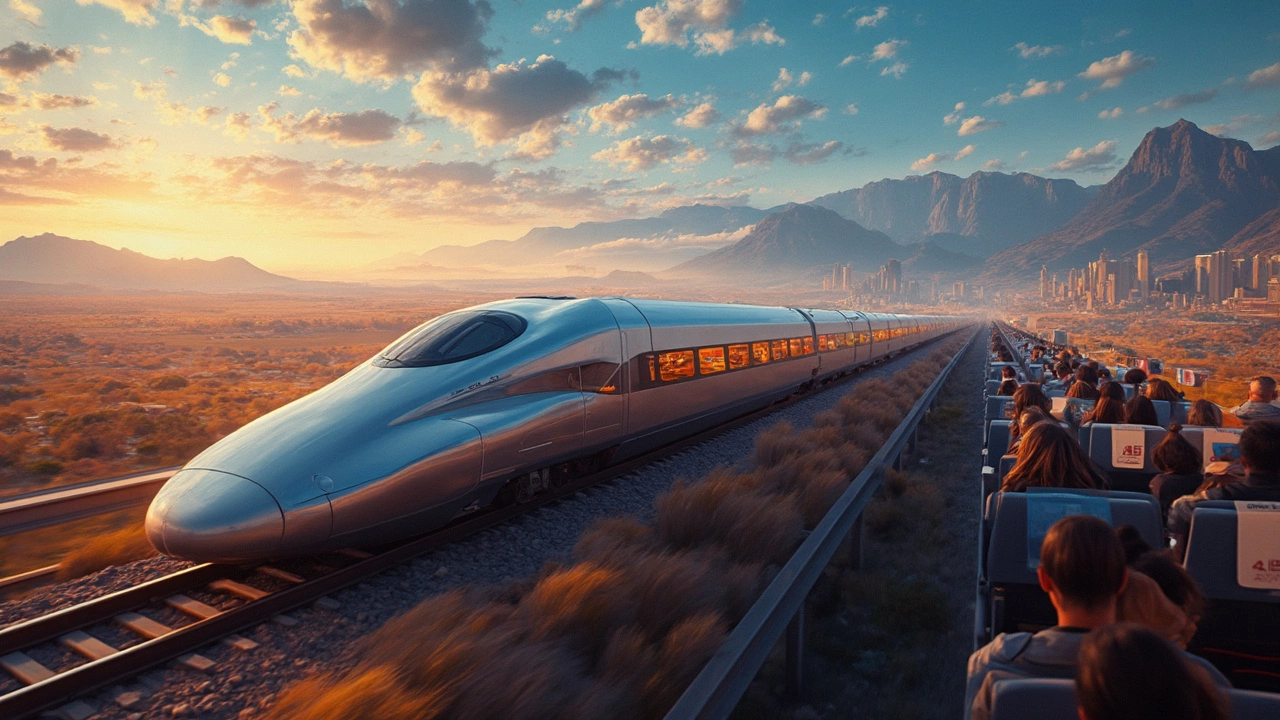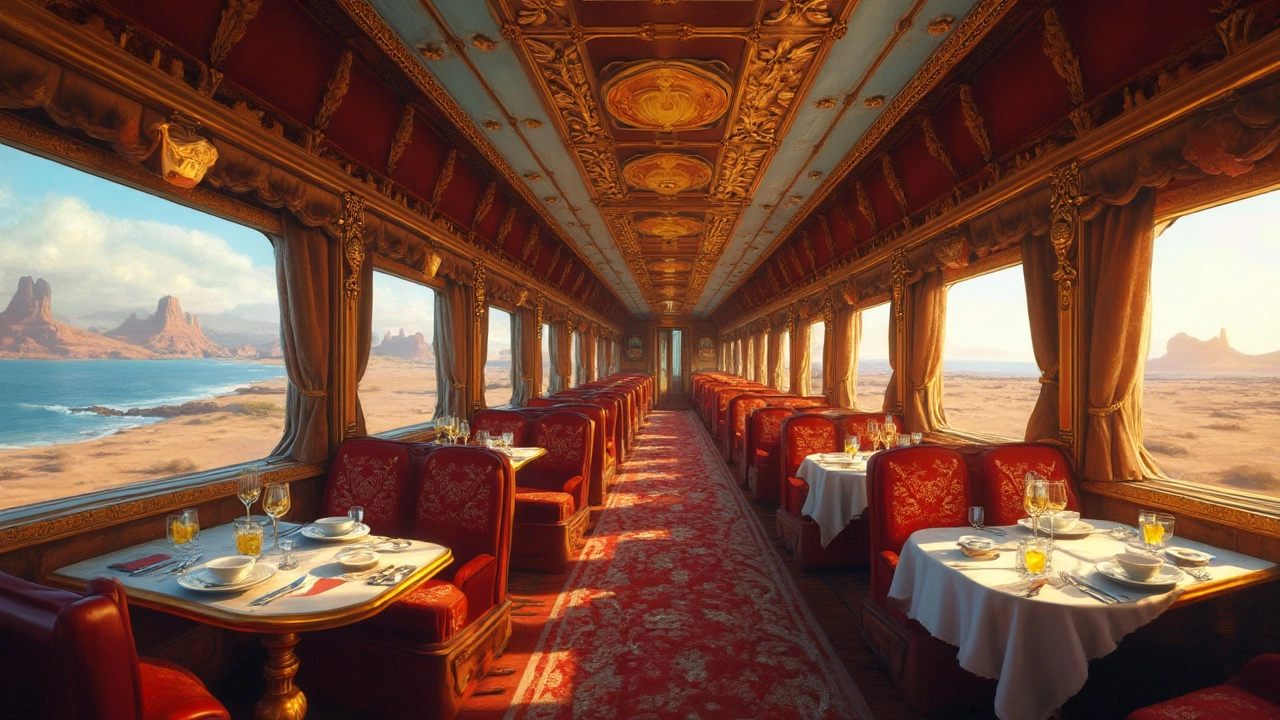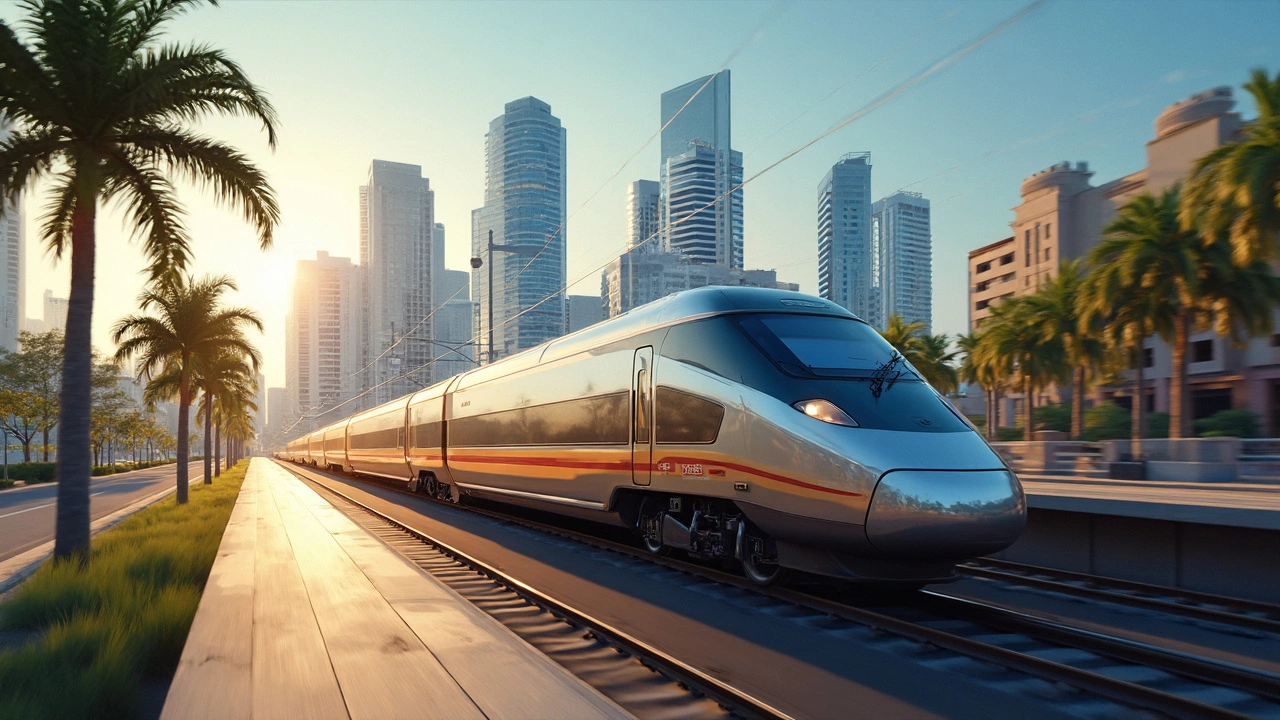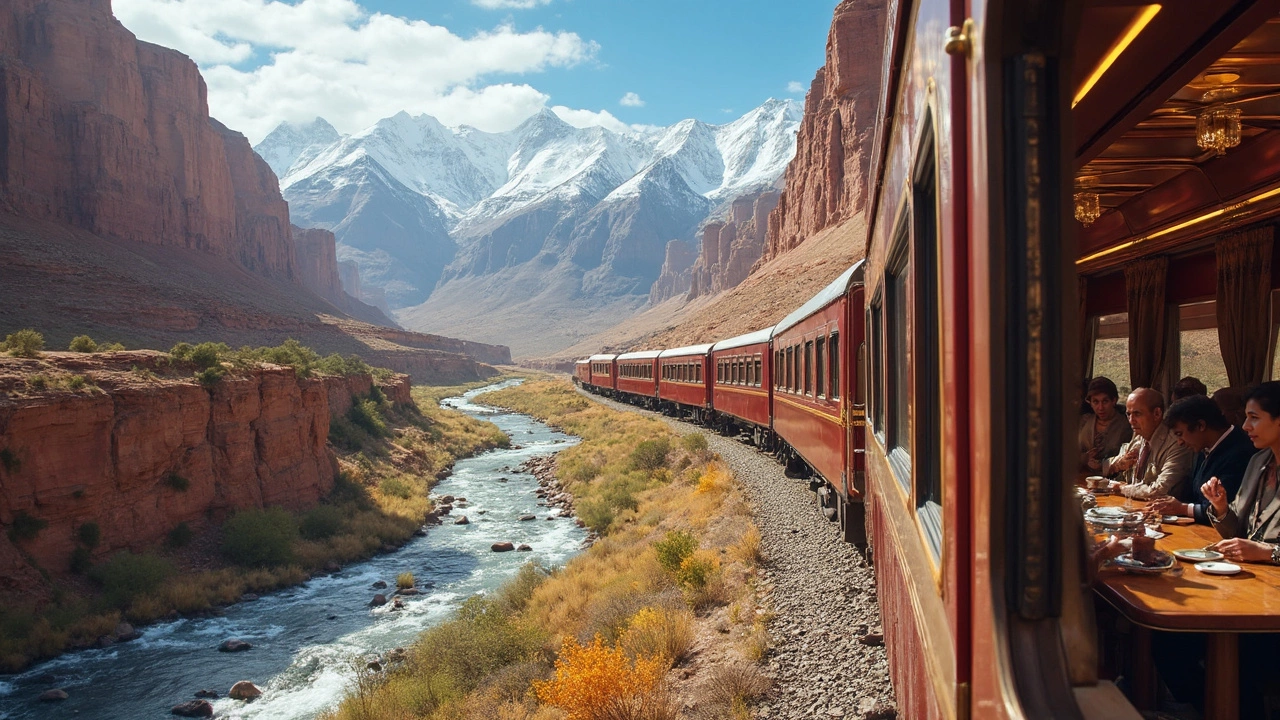How Long Would a Bullet Train Take from New York to California?

Imagine zipping from Manhattan to Los Angeles without airplane hassle—no long security lines, no cramped seats, and no baggage roulette. Instead, you're gliding on a quiet bullet train, sipping coffee while the landscape changes outside your window. But just how long would that ride actually take?
The distance isn't small: New York to California is about 2,800 miles, give or take, depending on your exact start and finish. With regular Amtrak service today, that journey drags on for more than three days. That's a lot of time for snacks, novels, and podcasts.
Now, swap in a high-speed train. Japan's famous Shinkansen and France's TGV clock speeds around 200 mph (sometimes more, but let's stick with realistic averages). Doing the math, a no-stops ride would shrink the trip to somewhere around 14 to 16 hours. Add a few stops and real-world slow-downs, and you're still well under 20 hours—a real game changer for cross-country travel.
Keep reading. There are more perks than just saving time. Think luxury lounges, gourmet dining, and panoramic views you just can't get at 35,000 feet. It’s not just a trip—it's an experience that could totally change how we see travel in America.
- The Distance: Coast to Coast in Numbers
- How Bullet Trains Stack Up: Speed, Comfort, and Reality
- Crunching the Travel Time: The Realistic Timeline
- Luxury on Rails: What the Ultimate Cross-Country Journey Could Offer
The Distance: Coast to Coast in Numbers
If you’ve ever flown from New York to California, you know it’s a serious haul. The crow-flies distance between NYC and Los Angeles is around 2,450 miles, but actual rail routes have to dodge mountains, cities, and all kinds of tricky terrain. A typical coast-to-coast bullet train route would clock in closer to 2,800 miles—think Penn Station in Manhattan all the way to Union Station in downtown LA.
Here’s a quick look at how that distance stacks up compared to your current options:
| Travel Method | Total Distance (miles) | Typical Duration |
|---|---|---|
| Car (I-80 route) | 2,900 | ~42 hours driving, no stops |
| Amtrak (Lake Shore Limited & Southwest Chief) | 2,800 | 66+ hours |
| Commercial Flight | 2,450 | 6 hours (nonstop flight) |
Now, trains don’t go in a straight line, but a well-designed high-speed rail could come pretty close with dedicated tracks. For comparison, Japan’s Tokyo-to-Hakata Shinkansen covers about 730 miles in roughly 5 hours, even with multiple stops. If you scaled up that system here, the time savings would be massive.
If—or let’s be real, when—you ever get a chance to ride such a train in the States, you’re looking at a whole new way to cross the country without spending two days on rails (or battling traffic through endless desert highways). Distance is still a factor, but with the right train, it finally stops being a dealbreaker.
How Bullet Trains Stack Up: Speed, Comfort, and Reality
Most Americans are used to highways and airports, but let’s face it, our trains just don’t cut it for cross-country speed. In Japan, the Shinkansen has been shooting between cities since 1964, and in France, the TGV makes short work of long hauls. These trains set the standard—and show exactly what the U.S. is missing.
The real kicker is the speed. The Shinkansen routinely runs at 200 mph, and the French TGV has hit nearly 360 mph in tests (but sticks to about 186–200 mph for normal service). Meanwhile, Amtrak’s fastest Northeast Corridor train, the Acela, tops out at 150 mph on a good day and then slows down for most of its run. Here’s how these trains compare on paper:
| Train | Average Speed (mph) | Max Speed (mph) | Start Year |
|---|---|---|---|
| Shinkansen (Japan) | 200 | 220 | 1964 |
| TGV (France) | 186 | 200+ | 1981 |
| Acela (USA) | 82 | 150 | 2000 |
But it’s not just about speed. Comfort matters. These high-speed trains offer roomy seats, wide aisles, and quiet cars—nothing like the cramped legs and twitchy seatmates of economy class air travel. There’s food you’d actually want to eat. Even basic class feels way better than most U.S. trains, and first class? It’s a rolling luxury lounge with attentive staff, real meals, and zero security line headaches.
Okay, reality check. Building a true bullet train from New York to California isn’t easy. It would mean new tracks, major tunnels, and high-tech control systems. Costs would be north of $100 billion (recent estimates for California’s high-speed line alone run over $130 billion). Plus, the U.S. has rougher terrain and private land issues Europe and Japan didn’t have to deal with.
Still, the perks are hard to ignore. High-speed rail gives you:
- Fast city-to-city links—skip the airport hassle
- Doorside boarding with less stress
- Views you’ll actually remember
- Space to move, stretch, work, or relax
If luxury is on your mind, you can expect amenities to rival private jets—think private suites, top-shelf dining, showers, and onboard bars. It’s not fantasy. Japan’s Gran Class cars and France’s TGV L’Océane first class already prove it's possible.

Crunching the Travel Time: The Realistic Timeline
Slicing across the country in a bullet train isn’t just fun to imagine—it’s a numbers game, and the math is pretty eye-opening. Let’s break it down using real facts and see what’s possible if the United States actually built a high-speed line from New York to California.
First, look at the fastest trains out there. The Japanese Shinkansen and the French TGV can each hit top speeds over 200 mph (320 km/h), but they usually run between 180-200 mph on regular service. Trains like China’s Fuxing, the world’s fastest, run at about 217 mph (350 km/h). These aren’t just theoretical numbers—people ride those velocities daily.
| Train System | Average Operational Speed (mph) | Distance NYC to LA (miles) | Non-stop Estimated Time |
|---|---|---|---|
| Shinkansen N700S | 186 | 2,800 | ~15 hours |
| French TGV | 200 | 2,800 | ~14 hours |
| Chinese Fuxing | 217 | 2,800 | ~13 hours |
| Amtrak (Current) | ~50 | 2,800 | ~60 hours |
Of course, real travel isn’t non-stop. Factor in station stops, track changes, city detours, and the usual stuff that slows things down. Most experts tack on an extra 2-4 hours for long-distance high-speed trips. So, if you’re penciling out your dream coast-to-coast ride, think 16-18 hours on a good day. That’s faster than some flight itineraries when you count layovers and airport taxi times.
If you’re planning things out, here’s what to expect on the ground:
- Trains rarely run at max speed for every mile, so build in buffer time.
- Expect 8-12 stops for major cities—figure 5-10 minutes each, so that’s about an hour added up.
- Weather and maintenance sometimes slow things down, just like with planes.
So, bottom line: a realistic bullet train journey from New York to California would clock in at about 17 hours, including stops. Not teleportation, but for a 2,800-mile luxury ride? That’s pretty hard to beat.
Luxury on Rails: What the Ultimate Cross-Country Journey Could Offer
If you've ever thought first class on a plane had it made, wait until you see what a next-gen bullet train could bring to America. High-speed rail in places like Japan, France, and even China already offers things that make some five-star hotels look basic. Imagine taking those perks up a notch on a coast-to-coast ride.
The real draw? Space to move. Forget cramped airplane seats. Top-tier bullet train cabins can offer private suites with beds, showers, personal attendants, and windows bigger than most living room TVs. The Shiki-shima train in Japan, for instance, features two-story suites, so it's not just a seat; it's your own rolling hotel room.
Dining’s another level. Onboard chefs could serve fresh, seasonal dishes in sleek dining cars, just like France’s TGV trains where Michelin-starred chefs have designed menus. On a New York to California trip, you could sample local ingredients from every region you zoom through—think East Coast seafood, Midwest steaks, and California wines, all while kicking back in a lounge car.
Entertainment shouldn’t be overlooked. Bullet trains in other countries feature private movie rooms, onboard spas, live music, and even mini gyms. You could stretch your legs or catch a movie instead of wrestling with turbulence.
Let’s talk numbers for a second. Here’s how today’s best luxury trains compare for key perks:
| Train | Cabin Features | Dining | Special Perks |
|---|---|---|---|
| Shiki-shima (Japan) | Private suites, bathtubs, panoramic windows | Multi-course Japanese & French fusion meals | Lounge, observatory cars, personal staff |
| Venice Simplon-Orient-Express (Europe) | Victorian-style suites, personal cabin steward | Fine dining, champagne bar | Music, historic décor, events |
| TGV L’Océane (France) | Reclining leather seats, family cabins | Chef-designed menus | Wi-Fi, quiet cars |
What could this mean for a U.S. coast-to-coast ride? With more room, better food, and non-stop entertainment, these journeys could be less about the destination and all about the ride. Booking early and choosing a roomette or luxury suite would give you the best experience. If you want to make the most of it, keep an eye out for Amtrak’s occasional luxury routes—but if a real bullet train is ever built, expect them to raise the bar for just how plush travel can get.

